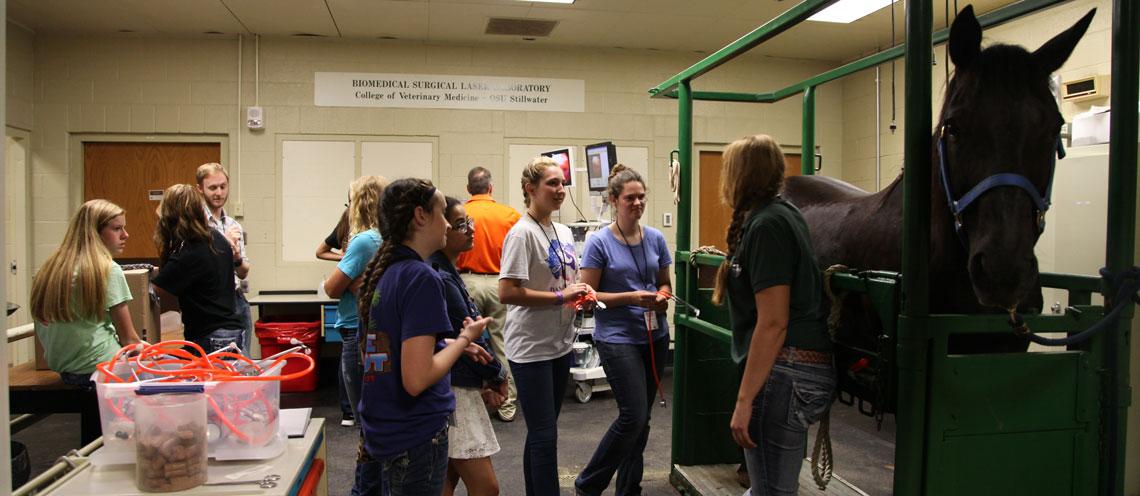
4-H Members Visit OSU
Friday, June 10, 2016
Thirty 4-H members from counties across Oklahoma recently visited OSU’s Center for Veterinary Health Sciences. They started the day with an overview of veterinary medicine given by Anna Teague and Robin Wilson with Student Services.
Their first activity with Dr. Brian Herrin involved learning about parasites and properly identifying common ones veterinarians see on a regular basis.
Part of their day was spent in the equine section of OSU’s Veterinary Medical Hospital hosted by Drs. Dan Burba and Elisabeth Giedt.
Visitors observed lung tissue of the horse at rest and during inflation.
A display of horse bones allowed students to see not only the skeleton but also the integration of the bones with tendons and ligaments in the leg of the horse.
The palpation “box pony” let students check their sense of touch. Using a long palpation sleeve they were asked to identify objects inside the box in much the same way veterinarians would palpate the digestive tract of the horse.
At the injection table, the use of injectable vaccines, tranquilizers and antibiotics were discussed while students used oranges and tinted water as practice tissues.
Students used ultrasound to identify tissues of different densities—in this case, fruit in a cup. Ultrasound can help veterinarians identify pregnant mares, discover damage to tendon and ligaments, and evaluate the health of internal organs such as the lung, liver and intestines.
A good sense of smell can be a valuable tool for a veterinarian. Students were challenged to identify various odors in unlabeled containers.
Endoscopy provides a way to look at structures inside of the horse. Using a green pepper, Dr. Dan Burba demonstrated how the use of endoscopy can help evaluate the breathing structures in the horse’s throat.
Two horse head skeletons were displayed showing how horses may develop sharp points on their teeth. Dental tools were available to show how veterinarians file off or float the teeth to make chewing and digestion easier for the horse.
Blackie was a very patient horse. Using a stethoscope all students were able to listen to his heart, lung and digestive sounds.
At the final stop of the day with Dr. Jill Akkerman, participants learned about anatomy, specifically the heart. Students dissected a pig’s heart learning how to identify the organ’s vital structures.
For more information on a career in veterinary medicine, visit www.cvhs.okstate.edu.
